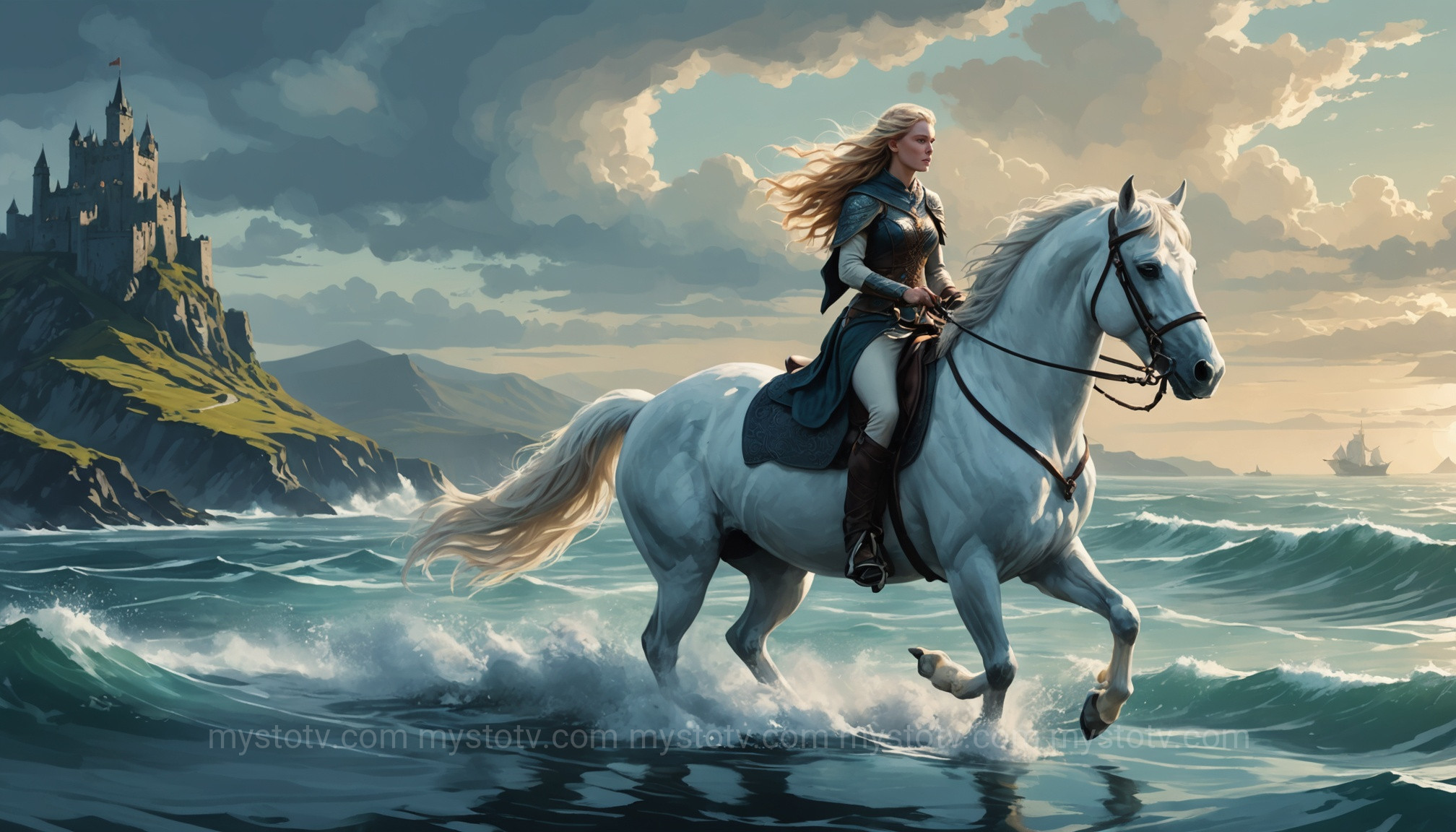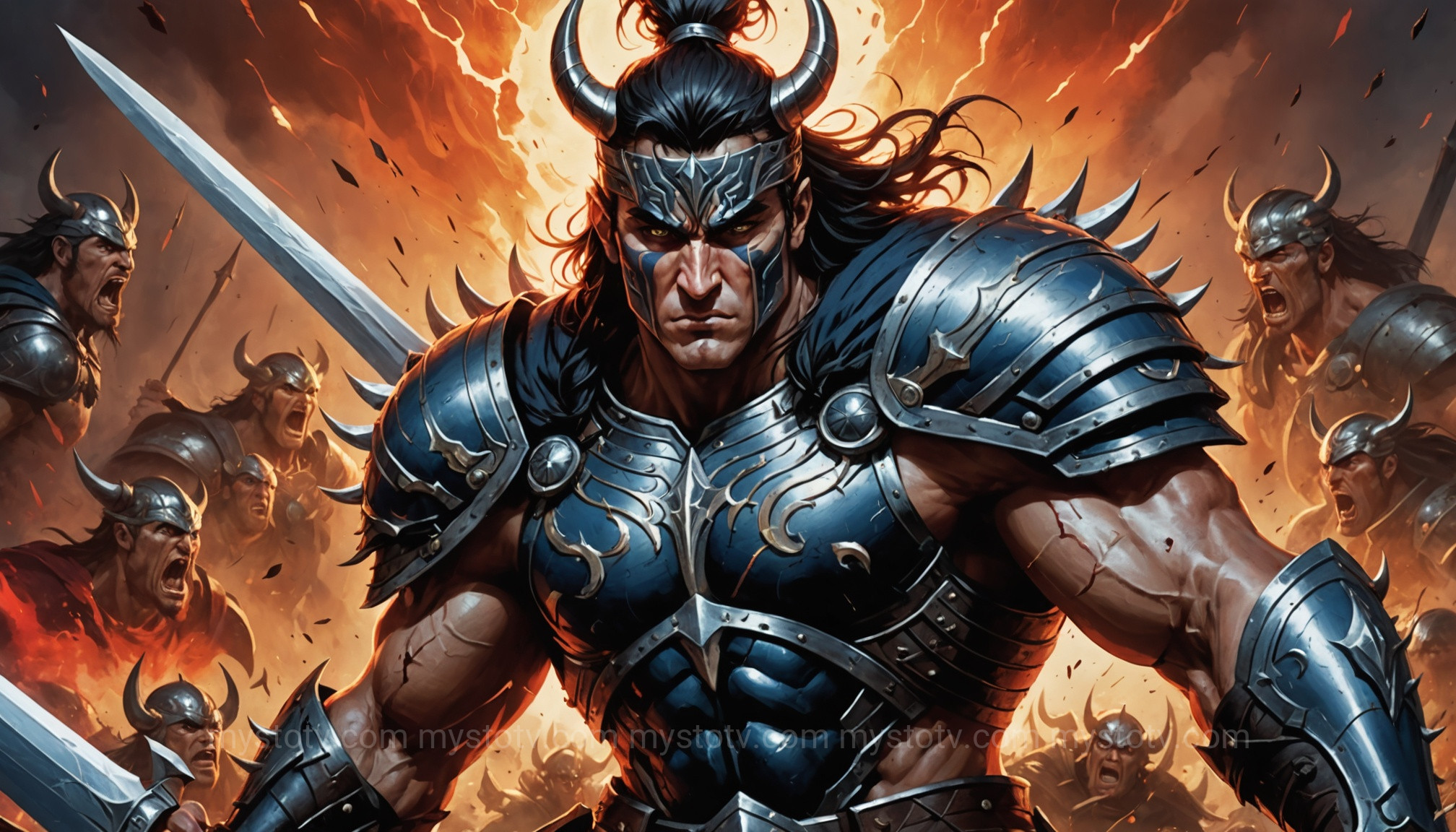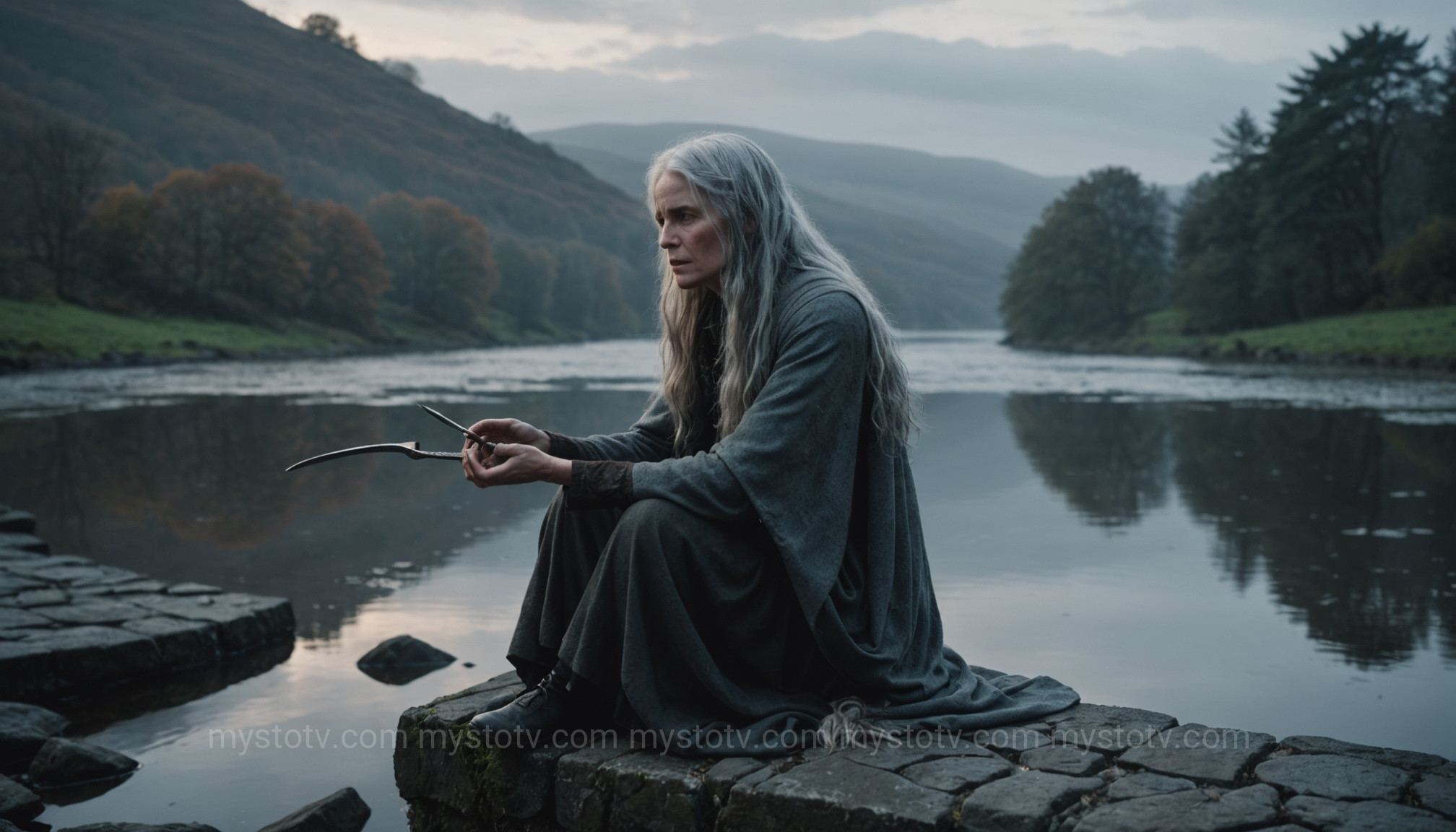I remember my first trip to Ireland, I was expecting a land saturated with the cheerful, green-clad leprechauns that adorned tourist shops. One evening in a quiet Doolin pub, nursing a pint, an old man began to speak. He didn't tell a story of rainbows or pots of gold. Instead, he spun a dark, mesmerizing yarn about a Púca, a shapeshifting trickster that lured weary travelers astray. That moment was a revelation. It was my first authentic taste of the real, complex world of Irish folklore, a world far more profound and thrilling than any caricature. These are the stories that have shaped the country's soul, the true Irish folk tales that move beyond the leprechaun and into the heart of Celtic imagination.
Contents
- 1 The Otherworld and Eternal Youth: The Most Captivating Irish Folk Tales
- 2 Epic Heroes and Warriors: The Ulster Cycle in Irish Folk Tales
- 3 The Aos Sí: Exploring the Supernatural Beings of Irish Folk Tales
- 4 Love, Loss, and Prophecy: The Tragic Romances of Irish Folk Tales
- 5 Frequently Asked Questions About Irish Folk Tales
- 6 References
- 7 Conclusion
The Otherworld and Eternal Youth: The Most Captivating Irish Folk Tales

Perhaps no concept is more central to the Celtic imagination than the Otherworld, a supernatural realm existing in parallel to our own. In Irish tradition, this is often called Tír na nÓg (the Land of Youth), a paradise free from sickness, death, and the ravages of time. The stories about this realm are not simple fantasies; they are profound explorations of human desire, loss, and the bittersweet nature of mortality. These specific Irish folk tales serve as a powerful metaphor for the allure of the unknown and the price of escaping the human condition. They question whether a life without struggle or end is truly a life worth living, a theme that resonates deeply within the Irish psyche.
The Tale of Oisín in Tír na nÓg
The most famous story concerning the Otherworld is that of Oisín, a great poet and warrior of the Fianna. He falls in love with Niamh Cinn-Óir (Niamh of the Golden Hair), a woman from Tír na nÓg. She invites him to her home, and he travels with her across the sea on her magical white horse. There, he lives in a state of blissful timelessness. What feels like three years to him is, in fact, three hundred years in the mortal world. Overcome with homesickness, he decides to return to Ireland to see his old comrades. Niamh warns him that if his feet touch Irish soil, the weight of the centuries will fall upon him instantly. She lends him her magical horse for the journey. Upon arriving, he finds a changed land. The Fianna are long gone, and the people are small and weak compared to the heroes of his memory. Seeing a group of men struggling to move a large stone, he leans down from his horse to help, but the saddle-girth breaks. He falls to the ground and instantly ages into a withered, ancient man, the 300 years catching up to him in a single, tragic moment. This powerful tale is a cornerstone of Irish folk tales about the Otherworld.
Epic Heroes and Warriors: The Ulster Cycle in Irish Folk Tales
While some tales explore the supernatural, others celebrate the martial prowess and tragic flaws of mortal heroes. The ancient sagas, particularly the Ulster Cycle, provide a window into the pre-Christian warrior society of Ireland. These are not just action stories; they are complex narratives filled with honor codes, prophecies, political intrigue, and intense human emotion. Analyzing these heroic Irish folk tales reveals a culture that valued bravery and loyalty but also understood the destructive nature of pride and rage. These heroes are not perfect; their greatness is often inseparable from their tragic destinies, making their stories enduringly powerful.
The Legend of Cú Chulainn, the Hound of Ulster

The central figure of the Ulster Cycle is Cú Chulainn, Ireland's greatest warrior. Originally named Sétanta, he earned his new name ("Culann's Hound") as a boy after killing the ferocious guard dog of the smith Culann and offering to take its place. His most famous exploit is his single-handed defense of Ulster against the army of Queen Medb of Connacht in the epic Táin Bó Cúailnge (The Cattle Raid of Cooley). Prone to a terrifying battle-frenzy known as the ríastrad, Cú Chulainn was an unstoppable force. Yet, his story is ultimately a tragedy. Bound by complex oaths (geasa), he is tricked into breaking them and goes into his final battle knowingly weakened, where he dies tied to a standing stone so he can face his enemies upright.
The Fenian Cycle and Fionn mac Cumhaill
If the Ulster Cycle is the dark, tragic opera of Irish mythology, the Fenian Cycle is the adventurous epic. Its central hero is Fionn mac Cumhaill (Finn MacCool), the leader of a band of wandering warriors known as the Fianna. Unlike the court-bound heroes of the Ulster Cycle, the Fianna lived in the wild, hunting and defending Ireland from threats. Fionn himself is a different kind of hero from Cú Chulainn—he is a poet, a seer, and a wise leader as much as a warrior. The famous story of the Salmon of Knowledge tells how, as a boy, he accidentally tasted the flesh of a magical fish and gained all the knowledge in the world. This wisdom, accessed by chewing his thumb, guided him throughout his life. This cycle of Irish folk tales emphasizes wisdom, connection to nature, and camaraderie.
The Aos Sí: Exploring the Supernatural Beings of Irish Folk Tales
The supernatural world of Ireland is populated by a vast array of beings known collectively as the Aos Sí (the people of the mounds), often referred to as fairies or the Good People. These are not the tiny, winged sprites of Victorian fantasy but the powerful, often dangerous descendants of the Tuatha Dé Danann, the gods of pre-Christian Ireland who retreated into the hollow hills. Exploring these figures in Irish folk tales reveals a deep-seated respect for the power of the unseen world and the importance of observing taboos. These stories acted as cautionary tales, explaining natural phenomena and reinforcing social norms by personifying the unpredictable forces of nature and fate.
The Banshee: Harbinger of Doom

The Banshee (from bean sí, "woman of the fairy mound") is one of the most famous and misunderstood figures in Irish folklore. She is not a malevolent spirit who causes death, but a herald who foretells it. Her piercing wail, or caoineadh, is said to be heard by members of certain ancient Irish families just before a relative is about to die. She can appear in several forms: a beautiful young woman, a stately matron, or a withered old hag. The Banshee represents an unbreakable link between prominent families and the Otherworld, a supernatural grief that announces a coming loss. Her presence in these Irish folk tales is a poignant reminder of mortality and ancestry.
The Púca: A Shapeshifting Trickster
The Púca (or Pooka) is a creature of mischief and menace, a shapeshifter that most often appears as a sleek black horse with glowing golden eyes. It roams the countryside at night, delighting in causing chaos. A common tale involves the Púca offering a drunken traveler a ride, only to take them on a terrifying, breakneck journey over mountains and through glens before dumping them in a ditch or bog at dawn. While sometimes malicious, the Púca can also be helpful, as some tales claim they might help with farm work if treated with respect. The Púca embodies the wild, untamed spirit of the Irish landscape and the unpredictable nature of luck, serving as a powerful character in many rural Irish folk tales.
Love, Loss, and Prophecy: The Tragic Romances of Irish Folk Tales
Beyond heroes and monsters, some of the most emotionally resonant Irish folk tales are the great romantic tragedies. These stories, often part of the Mythological or Ulster Cycles, delve into themes of fated love, jealousy, and the clash between personal desire and societal duty. They are filled with passion and heartbreak, and their influence can be seen in Irish literature for centuries, from W.B. Yeats to modern writers. The analysis of these tales shows a deep cultural fascination with the concept of destiny and the idea that great love and great sorrow are often two sides of the same coin. These narratives are not just about romance; they are about the human cost of prophecy and power.
The Sorrow of Deirdre
Known as "Deirdre of the Sorrows," her story is one of the great tragedies of Irish literature. At her birth, the druid Cathbad prophesied that her incredible beauty would cause wars and bring ruin to the heroes of Ulster. To prevent this, King Conchobar mac Nessa hid her away, intending to marry her when she came of age. However, Deirdre fell in love with a handsome young warrior named Naoise and fled with him and his two brothers to Scotland. After many years, Conchobar lured them back with false promises of forgiveness. Despite Deirdre's prophetic warnings, Naoise trusted the king's honor. Upon their return, Conchobar had Naoise and his brothers murdered, and Deirdre, heartbroken, took her own life. Her story is a poignant exploration of inescapable fate.
The Pursuit of Diarmuid and Gráinne
This tale from the Fenian Cycle shares themes with the story of Deirdre but adds a layer of magical compulsion. The beautiful Gráinne is betrothed to an aging Fionn mac Cumhaill, but on her wedding night, she falls for one of his best warriors, Diarmuid Ua Duibhne. Diarmuid is famous for his ball seirce, or "love spot," on his forehead, which makes any woman who sees it fall instantly in love with him. Gráinne places a geis (a magical bond or taboo) on Diarmuid, forcing him to run away with her. This sparks a massive pursuit across Ireland by the legendary Fionn mac Cumhaill and the Fianna. For years, Diarmuid and Gráinne evade capture, but their story ends in tragedy when Fionn, his jealousy unabated, subtly arranges for Diarmuid's death by a giant boar. This is one of the most classic love-triangle Irish folk tales.
Frequently Asked Questions About Irish Folk Tales
Here are answers to some common questions that arise when exploring the rich tapestry of Irish folklore.
What is the main difference between Irish myths and Irish folk tales?
While often used interchangeably, there's a general distinction. "Myths" usually refer to the grand, foundational stories concerning gods and the creation of the world or a people, like the tales of the Tuatha Dé Danann in the Mythological Cycle. "Folk tales" tend to be smaller-scale stories, often featuring supernatural beings like banshees or the Púca interacting with ordinary people. They were part of a vibrant oral tradition meant to entertain, teach moral lessons, or explain local landmarks. However, the lines are very blurry, and many stories, like the Ulster Cycle epics, contain elements of both.
Are these Irish folk tales still told today?
Yes, absolutely. While the traditional fireside seanchaí (storyteller) is rarer now, the stories live on. They are taught in Irish schools, adapted into modern books, plays, and films, and form the backbone of the Irish literary tradition. Storytelling festivals, like the Cape Clear Island International Storytelling Festival, keep the oral tradition alive. The themes and characters from these ancient Irish folk tales are deeply embedded in the modern cultural consciousness of Ireland.
Where can I find authentic collections of Irish folk tales?
For those looking to read the stories themselves, several excellent collections are available. Lady Augusta Gregory's "Cuchulain of Muirthemne" (1902) and "Gods and Fighting Men" (1904) are classic, albeit stylized, retellings that W.B. Yeats called "the best book to have come out of Ireland in my time." For more modern and scholarly work, seek out translations by Jeffrey Gantz or the Irish Texts Society. The National Folklore Collection at University College Dublin (UCD) also has a vast digital archive of stories collected from oral tradition in the 20th century.
References
- Gregory, Lady Augusta. Cuchulain of Muirthemne: The Story of the Men of the Red Branch of Ulster. John Murray, 1902.
- Ó hÓgáin, Dáithí. The Lore of Ireland: An Encyclopaedia of Myth, Legend and Romance. The Collins Press, 2006.
- University College Dublin. The National Folklore Collection (Cnuasach Bhéaloideas Éireann). https://www.ucd.ie/irishfolklore/en/
- Gantz, Jeffrey. Early Irish Myths and Sagas. Penguin Classics, 1981.
Conclusion
To look beyond the leprechaun is to discover an Ireland teeming with epic heroes, tragic queens, formidable gods, and a host of supernatural beings that are at once terrifying and alluring. The true magic of Irish folk tales lies not in pots of gold but in their profound psychological depth and enduring cultural power. From the timeless sorrow of Deirdre to the heroic rage of Cú Chulainn and the otherworldly journey of Oisín, these stories explore the universal human experiences of love, loss, bravery, and the mystery of the unknown. They are the bedrock of a rich literary heritage and a living tradition that continues to captivate and inspire. Delving into this world is a journey into the very soul of Ireland itself.